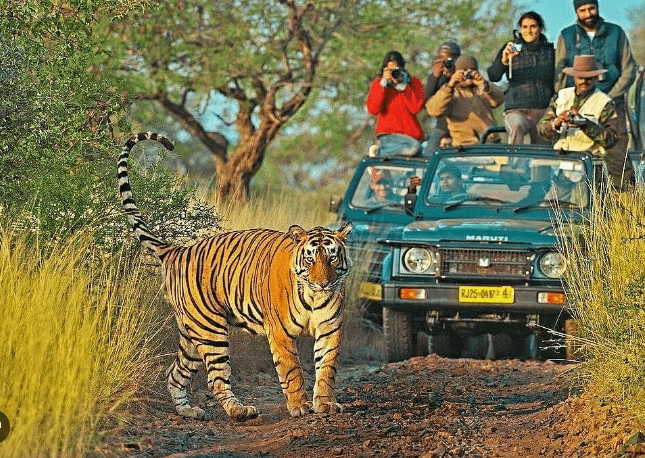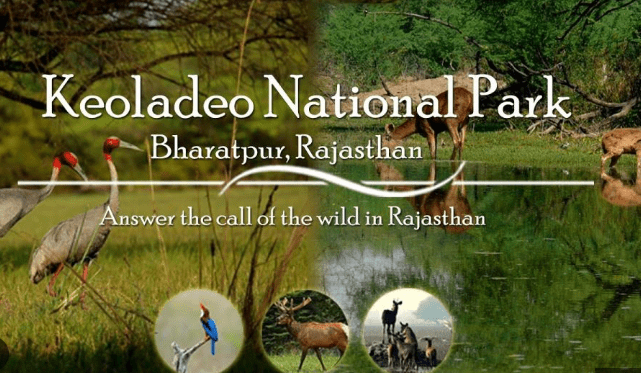India’s Best Wildlife Sanctuaries: India, a land of diverse landscapes and rich biodiversity, boasts some of the most captivating wildlife sanctuaries in the world. From the majestic Royal Bengal Tiger to the graceful Asiatic Elephant, these sanctuaries offer a glimpse into the vibrant tapestry of India’s wildlife. Let’s embark on a journey to discover the top 10 wildlife sanctuaries in India, each a haven for nature enthusiasts and wildlife lovers alike.
Best Wildlife Sanctuaries
Jim Corbett National Park, Uttarakhand:
Best Wildlife Sanctuaries: Jim Corbett National Park in Uttarakhand, India’s oldest national park, is a haven for wildlife enthusiasts. Named after the legendary hunter-turned-conservationist Jim Corbett, it is celebrated for its population of Bengal tigers. Nestled in the foothills of the Himalayas, the park’s diverse terrain encompasses dense forests, grasslands, and riverine habitats.


Wildlife safaris offer glimpses of not only tigers but also leopards, elephants, and a rich variety of bird species. Jim Corbett National Park stands as a testament to India’s commitment to wildlife conservation and eco-tourism.
Ranthambore National Park, Rajasthan:
Ranthambore National Park, located in the royal state of Rajasthan, is a jewel of India’s Best Wildlife Sanctuaries. Renowned for its population of Royal Bengal Tigers, it offers a thrilling safari experience amidst ancient ruins and tranquil lakes. The park’s picturesque landscape provides a stunning backdrop for spotting these majestic big cats in their natural habitat.


Beyond tigers, Ranthambore is also home to a diverse array of wildlife, including leopards, sloth bears, and a variety of bird species. With its rich biodiversity and captivating scenery, Ranthambore National Park stands as a testament to India’s commitment to wildlife conservation and ecotourism.
Kaziranga National Park, Assam:
Best Wildlife Sanctuaries: Kaziranga National Park, nestled in the heart of Assam, is a UNESCO World Heritage Site renowned for its population of one-horned rhinoceros. Spanning the floodplains of the Brahmaputra River, it offers a unique ecosystem that supports diverse wildlife, including wild elephants, Asiatic water buffaloes, and myriad bird species.


The park’s vast grasslands and dense forests provide a picturesque setting for wildlife safaris and birdwatching excursions. Kaziranga’s successful conservation efforts have led to the recovery of the one-horned rhinoceros population, making it a symbol of India’s commitment to preserving its natural heritage for future generations to cherish and enjoy.
Bandhavgarh National Park, Madhya Pradesh:
Bandhavgarh National Park in Madhya Pradesh, India, is renowned for its high density of Royal Bengal Tigers. This biodiverse sanctuary boasts ancient ruins and rugged terrain, adding mystique to wildlife safaris. It is said to have inspired Rudyard Kipling’s “The Jungle Book,” showcasing its rich natural beauty and wildlife diversity. Beyond tigers, Bandhavgarh is home to leopards, deer, and numerous bird species. The park’s scenic landscapes and thrilling wildlife encounters make it a must-visit destination for nature enthusiasts and photographers alike.


Periyar Wildlife Sanctuary, Kerala:
Periyar Wildlife Sanctuary in Kerala, India, is a pristine haven nestled in the Western Ghats. Spanning lush forests and the serene Periyar Lake, it’s a sanctuary for diverse wildlife. Visitors can embark on boat safaris to spot herds of elephants, sambar deer, and elusive Nilgiri langurs. The sanctuary’s tranquil ambiance and scenic beauty offer a rejuvenating escape into nature’s embrace. Periyar Wildlife Sanctuary’s conservation efforts and ecotourism initiatives make it a cherished destination for nature enthusiasts seeking solace amidst Kerala’s enchanting landscapes.


Gir Forest National Park, Gujarat:
Gir National Park in Gujarat, India, is the last abode of the endangered Asiatic Lion. Spread across rugged terrain and dry deciduous forests, it’s a vital sanctuary for wildlife conservation. The park’s unique ecosystem supports a variety of flora and fauna, including leopards, deer, and numerous bird species. Safari tours offer visitors a chance to witness these majestic lions in their natural habitat. Gir National Park’s conservation efforts and cultural significance make it a cherished gem of India’s natural heritage.


Sundarbans National Park, West Bengal:
Sundarbans National Park, a UNESCO World Heritage Site in West Bengal, is the largest mangrove forest in the world. Its unique ecosystem, shaped by the tides of the Bay of Bengal, is home to the elusive Bengal tiger. Exploring the park’s labyrinthine waterways by boat offers a thrilling adventure into the heart of the mangrove wilderness. Besides tigers, the Sundarbans teem with diverse wildlife, including crocodiles, snakes, and a rich variety of birdlife, making it a paradise for nature enthusiasts.


Kanha National Park, Madhya Pradesh:
Kanha National Park in Madhya Pradesh, India, is a wildlife enthusiast’s paradise. Inspired by Rudyard Kipling’s “The Jungle Book,” this picturesque sanctuary is renowned for its scenic beauty and diverse wildlife. Its sprawling meadows and dense Sal forests provide the perfect habitat for Bengal tigers, leopards, and barasingha deer. Wildlife safaris offer a thrilling opportunity to spot these majestic creatures in their natural habitat. Kanha National Park’s conservation efforts and breathtaking landscapes make it a must-visit destination for nature lovers and photographers alike.


Tadoba Andhari Tiger Reserve, Maharashtra:
Tadoba Andhari Tiger Reserve in Maharashtra, India, is a pristine wilderness sanctuary. It is Maharashtra’s oldest and largest national park, celebrated for its thriving tiger population. The reserve’s rugged terrain and teak forests provide a picturesque backdrop for wildlife safaris and birdwatching excursions. Beyond tigers, Tadoba is home to leopards, sloth bears, and a rich variety of bird species. Its tranquil ambiance and rich biodiversity make it a favored destination for nature enthusiasts and wildlife photographers seeking memorable encounters in the heart of Maharashtra’s wilderness.


Hemis National Park, Ladakh:
Hemis National Park in Ladakh, India, is a high-altitude sanctuary renowned for its elusive snow leopards. Nestled amidst the stark landscapes of the Himalayas, it offers a breathtaking wilderness experience. Trekking through its rugged terrain, visitors can marvel at the park’s unique flora and fauna, including Tibetan wolves and blue sheep. Hemis is also home to a rich variety of birdlife, thriving in the pristine mountain environment. Its remote location and majestic beauty make it a must-visit destination for adventure seekers and wildlife enthusiasts alike.


Keoladeo National Park, Bharatpur:
Bharatpur Bird Sanctuary, also known as Keoladeo National Park, is a paradise for birdwatchers in Rajasthan, India. This UNESCO World Heritage Site attracts migratory birds from across the globe, especially during the winter months. Its marshy wetlands and woodlands provide a diverse habitat for over 370 bird species, including rare Siberian cranes. Visitors can explore the sanctuary on foot, bicycle, or boat, immersing themselves in the serene beauty of nature while observing colorful avian species in their natural habitat.


Pench National Park, Madhya Pradesh:
Pench National Park in Madhya Pradesh, India, is a captivating wilderness sanctuary. Immortalized by Rudyard Kipling’s “The Jungle Book,” it showcases a diverse landscape of dense forests, serene rivers, and lush meadows. The park is renowned for its thriving population of Bengal tigers and leopards, offering exciting wildlife encounters during safari tours.


Pench’s tranquil ambiance and rich biodiversity, including deer, langurs, and over 250 bird species, make it a haven for nature lovers and wildlife enthusiasts seeking an unforgettable adventure amidst nature’s splendor.
